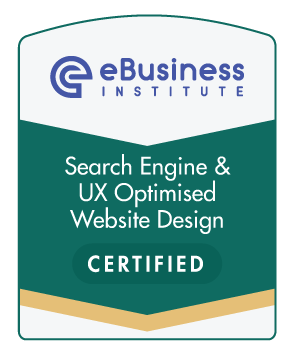
If you’ve been looking at having a website built or you’re looking at improving the ranking and conversion from your existing website, you’ve probably come across the term UX – but what is it exactly, and why is it important?
What is UX?
UX is short for User Experience – the way your site is designed to help a user interact with it.
The goal of good User Experience design
The goal of good User Experience design is to create a good user experience for visitors to your website so that they:
- stay on your site longer
- are guided through your product or service offering
- interact with your site more
- feel confident about purchasing your product/service, accepting your offer or contacting you for more information.
What is good UX design?
Most visitors to websites have what’s called an ‘Evidence Procedure’ that has to be fulfilled before they can take the next step and either purchase your product/service or make an inquiry. This basically means that people will need to have a certain number of their questions answered before they’re ready to take the next step. The number of questions will be different for different people and will also vary depending on the complexity and cost of your offering.
In basic terms, some of the ‘evidence’ that people will need to see includes:
- Am I in the right place?
- Does this website feel credible?
- Can it deliver what I need?
If you don’t provide answers that give visitors the evidence they need to answer those questions, then chances are you’re missing out on a lot of potential customers.
Good UX design starts with making the visitor immediately comfortable and confident that they are on a legitimate website that is likely to fulfil the need that they are visiting it for.
With that in mind, having a site that loads fast is of utmost importance. In fact, according to some Google research, 53% of mobile users will abandon their visit to a site if it takes longer than 3 seconds to load. So streamlining your homepage for speed is critical in creating a good first impression and getting people to hang around long enough to see what you’re about.
Next, you want to make it clear to visitors that they are in the right place. Everything that is clearly visible ‘above the fold’ of your website should be there to inform and reassure visitors that they are in the right place and make it easy for them to contact you.
Making sure you have a clear logo, appropriate images and an obvious CTA right at the top of the page will go a long way toward increasing conversions on your site.
Simplicity is also one of the key factors in good UX – clever design is something we all appreciate, but if it sacrifices conversion because people can’t figure out how to navigate your site then it’s crippling your online presence.
‘Hiding’ menus and links is one of the biggest sins in website design – sure, having a clean, minimalist look is great, but if people have to work too hard to find the navigation menu or links to more information then they’re going to get frustrated and go straight into the waiting arms of your competitors.
Once you’ve sorted out your speed and ease of navigation, the next thing to tackle is making sure your content is original and fulfils what the visitor is looking for. Have a think about any questions that a potential customer might have and make sure you address as many of them as possible on your website – the more roadblocks you remove, the more likely visitors are to follow the path through to a purchase. Once again, simplicity is your friend here – make sure you organise the information in a logical manner, keep descriptions and explanations clear and straightforward, use bullet points where you can and make the most of subheadings! Very few people will actually read their way through your whole site, but if you give them plenty of eye-catching bullet points and subheadings then you’ll be able to get their attention as they scan quickly through pages looking for information that will let them tick off another item on their ‘evidence procedure’ list.
The ‘Hidden’ Benefit
As well as improving the experience for human users on your site, having a good UX design may also help search engines to rank and respect your website more highly. If your site is well organised, with good navigation and metadata and has a good amount of quality, relevant content search engines will consider it to be an authority site and start to give it preference in searches. Remember, the goal of search engines is to also deliver a good UX to searchers – they want people to have a good experience when they’re searching for information. If your site delivers that, then it will soon start to benefit from having a good reputation with search engines.
Email us to find out how we can help your business website connect with more clients.


Photo by Kevin Bhagat on Unsplash



